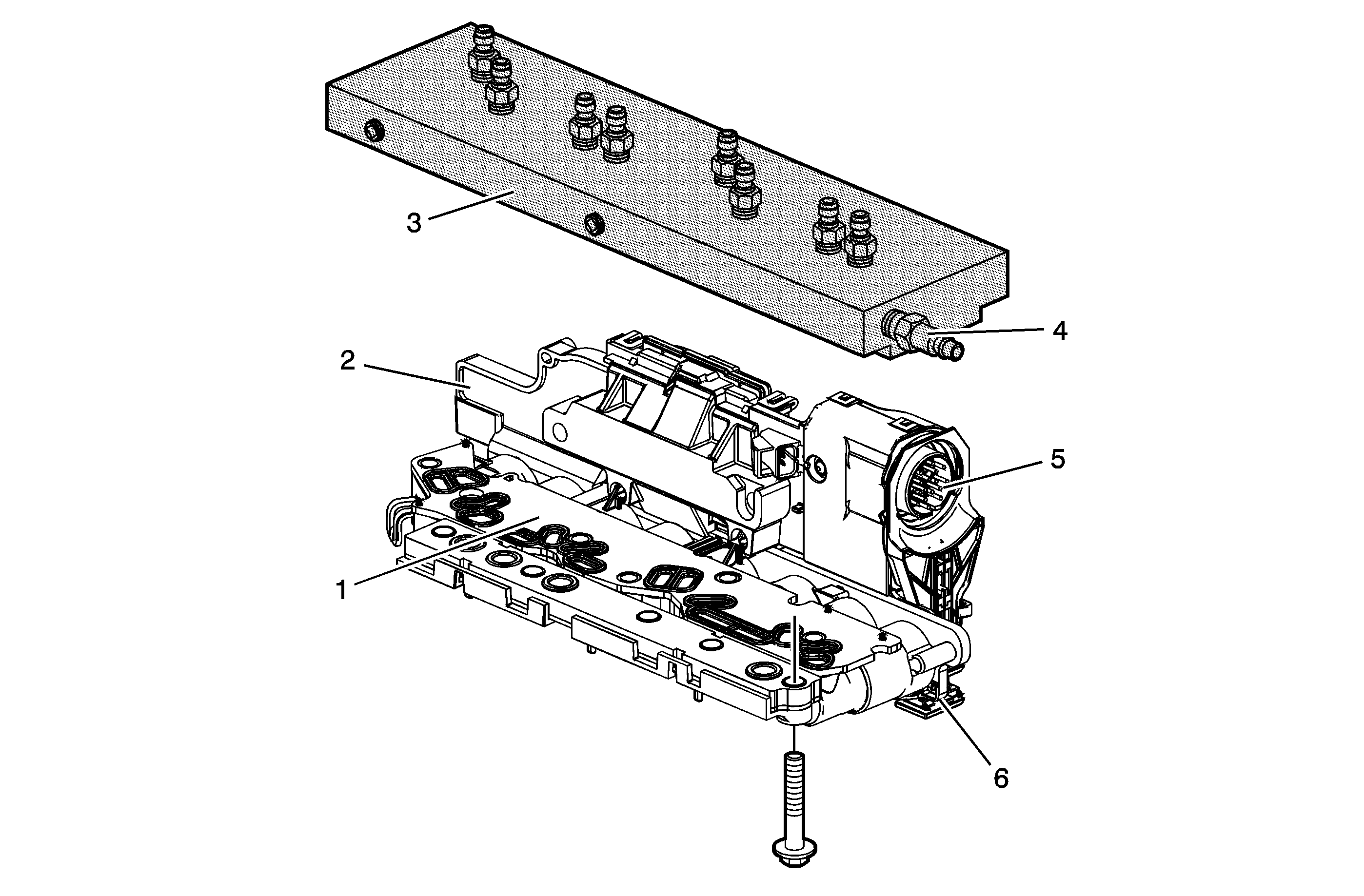The purpose of this procedure is to test the functionality of the control solenoid (w/body and TCM) valve assembly solenoids for a gross stuck open or stuck closed condition, or a faulty transmission fluid pressure (TFP) switch.
DT-47825
is bolted to the control solenoid (w/body and TCM) valve assembly on the valve body mounting surface. Pressurized air is passed into the aluminum test block, through the control solenoid (w/body and TCM) valve assembly
solenoid passage and back to the outlet port on the test block. A scan tool is used to command the solenoids ON and OFF. While observing the airflow, one can determine the valve functionality. The recommended shop air pressure for this test is regulated to 90-100 psi.

